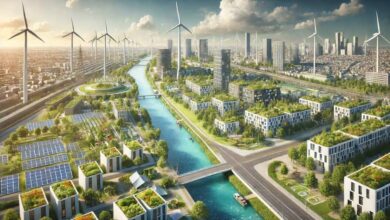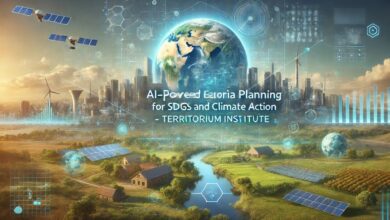Climate ActionSDGs
SDG Climate Action Topical Authority for Citizens-SDGIEVER

Table of Content
[hide]
- Pillar Content 1: Sustainable Living for the Everyday Citizen
- Pillar Content 2: Water, Sanitation, and Hygiene (SDG 6)
- Pillar Content 3: Personal Health, Well-being, and Sustainable Lifestyles
- Pillar Content 4: Home Gardening and Urban Agriculture
- Pillar Content 5: Renewable Energy for Homeowners
- Pillar Content 6: Sustainable Consumption and Responsible Choices
- Pillar Content 7: Sustainable Transportation and Mobility
- Pillar Content 8: Civic Engagement and Advocacy for Sustainability
- Pillar Content 9: Financial Wellness and Green Investments
- Pillar Content 10: Disaster Preparedness and Resilience
- Pillar Content 11: Digital Transformation for Sustainable Living
I understand. You’re asking for a parallel topical authority structure that is more citizen-focused but still aligned with the same Sustainable Development Goals (SDGs) and challenges. This content will be aimed at engaging individuals, homeowners, and local communities through SUSTAINOPIA, your platform designed to address the citizen component of the quadruple helix model of innovation. The goal will be to provide accessible, practical, and inspiring information that helps individuals and households contribute to sustainable development at the local level.
Pillar Content 1: Sustainable Living for the Everyday Citizen
Cluster 1: Sustainable Living Practices at Home
- How to Make Your Home More Sustainable: Simple Changes for Big Impact
- Cutting Your Carbon Footprint at Home: A Step-by-Step Guide
- Zero Waste Living: A Beginner’s Guide to Reducing Household Waste
- Energy Efficiency for Homeowners: How to Reduce Utility Bills and Save the Planet
- The Benefits of Home Composting and How to Get Started
- Eco-Friendly Home Renovations: Tips for Greener Spaces
- Water Conservation Tips for the Household: Small Steps for Big Savings
- How to Create a Sustainable Garden in Your Backyard
- The Role of Smart Home Technology in Sustainable Living
- How to Make Sustainable Choices When Buying Appliances and Furniture
Pillar Content 2: Water, Sanitation, and Hygiene (SDG 6)
Cluster 2: Clean Water and Sanitation for All
- How to Reduce Water Usage at Home: Tips for Every Room
- Why Clean Water is a Human Right: How to Support Water Access Locally
- Greywater Systems for Your Home: Recycling Water for a Greener Future
- Rainwater Harvesting: How Homeowners Can Collect and Use Rainwater Efficiently
- How to Prevent Water Pollution in Your Neighborhood
- Sustainable Water Filters: Ensuring Safe Drinking Water for Your Family
- Eco-Friendly Solutions for Wastewater Management at Home
- Why Septic Tank Maintenance is Important for Environmental Health
- Water-Saving Appliances: Choosing the Best Options for Your Home
- Creating a Water-Wise Garden: How to Conserve Water in Landscaping
Pillar Content 3: Personal Health, Well-being, and Sustainable Lifestyles
Cluster 3: Health and Well-being for a Sustainable Future
- How to Eat Sustainably: Choosing Local and Organic Foods
- The Health Benefits of a Plant-Based Diet: Is It Right for You?
- Sustainable Fitness: Eco-Friendly Ways to Stay Active
- How Mindfulness and Minimalism Can Contribute to a Sustainable Lifestyle
- Eco-Friendly Personal Care Products: What to Look for and Avoid
- Sustainable Fashion: How to Build a Wardrobe that’s Good for the Planet
- Why Mental Health is Key to Building Sustainable Communities
- How to Grow Your Own Food: Urban Gardening Tips for Beginners
- The Impact of Fast Fashion on the Environment and What You Can Do About It
- How to Organize a Local Farmers Market and Support Sustainable Agriculture
Pillar Content 4: Home Gardening and Urban Agriculture
Cluster 4: Home Gardening for Sustainability
- How to Start a Home Garden: A Beginner’s Guide
- Growing Your Own Vegetables: Why It’s Good for You and the Planet
- Creating an Eco-Friendly Garden: Tips for Organic and Sustainable Gardening
- How to Build a Vertical Garden to Save Space and Grow More
- The Benefits of Urban Farming and How You Can Participate
- Composting at Home: How to Turn Waste into Fertilizer
- Building a Pollinator-Friendly Garden to Support Local Biodiversity
- How to Grow Herbs Indoors: A Simple Guide for Beginners
- Water-Wise Gardening: How to Keep Your Garden Thriving While Conserving Water
- Community Gardening: How to Join or Start One in Your Area
Pillar Content 5: Renewable Energy for Homeowners
Cluster 5: Renewable Energy for Your Home
- How to Transition to Solar Power at Home
- Wind Energy for Homeowners: Is It a Viable Option?
- Energy Independence: What It Means and Why It’s Important
- How to Reduce Your Home’s Energy Consumption Without Sacrificing Comfort
- Battery Storage Solutions for Homeowners: The Next Step in Energy Independence
- Electricity Management Systems: Smart Ways to Monitor Energy Use at Home
- Off-Grid Living: Is It Possible for Homeowners in the City?
- What Homeowners Need to Know About Government Incentives for Renewable Energy
- The Best Energy-Efficient Appliances for 2024
- How Community Solar Programs Can Help You Go Green Without Installing Panels
Pillar Content 6: Sustainable Consumption and Responsible Choices
Cluster 6: Conscious Consumerism
- How to Be a Conscious Consumer: Making Eco-Friendly Shopping Choices
- Why Buying Local Is a Key Component of Sustainable Living
- The Hidden Costs of Fast Fashion and What You Can Do About It
- How to Reduce Plastic Use in Your Daily Life
- Supporting Ethical Brands: How to Spot Greenwashing
- The Benefits of Buying Secondhand: A Guide to Thrift Shopping
- How to Create a Zero-Waste Kitchen
- Why Sustainable Packaging Matters and How to Identify It
- Eco-Friendly Gift Ideas for Every Occasion
- How to Conduct a Sustainable Spring Cleaning: Decluttering the Green Way
Pillar Content 7: Sustainable Transportation and Mobility
Cluster 7: Sustainable Transportation and Mobility
- Choosing the Right Electric Vehicle for Your Family: What to Consider
- Biking for Sustainability: How to Make Cycling Part of Your Daily Routine
- Carpooling and Ride-Sharing: Why It’s Good for You and the Environment
- Public Transport Tips: How to Use Your City’s Green Options Efficiently
- E-Scooters and Other Micromobility Options: Are They Really Sustainable?
- How to Reduce Emissions by Walking More and Driving Less
- Planning Your Family’s Travel with Sustainability in Mind
- The Benefits of Owning an Electric Bike: A Practical Guide for Beginners
- How to Advocate for Better Public Transit in Your Community
- Is Remote Work More Sustainable? A Look at the Environmental Benefits of Working from Home
Pillar Content 8: Civic Engagement and Advocacy for Sustainability
Cluster 8: Advocacy and Civic Engagement
- How to Advocate for Sustainable Policies in Your Community
- The Role of Citizen Engagement in Shaping Local Sustainability Initiatives
- How to Make Your Voice Heard in Local Environmental Policy
- Organizing Grassroots Movements for Sustainable Change
- The Power of Voting for Sustainability: A Guide for Civic Engagement
- How to Support Local Governments in Developing Green Policies
- Participating in Town Hall Meetings: How to Push for Sustainability Initiatives
- Working with Local Schools to Promote Environmental Education
- How to Build a Coalition for Sustainability in Your Neighborhood
- The Role of Social Media in Advocacy: How to Raise Awareness for Sustainability Causes
Pillar Content 9: Financial Wellness and Green Investments
Cluster 9: Sustainable Finance for Individuals
- How to Make Green Investments: A Beginner’s Guide
- Building a Personal Budget that Prioritizes Sustainability
- What Is Ethical Banking and Why It Matters
- Green Mortgages: How to Get Financing for an Eco-Friendly Home
- How to Reduce Your Carbon Footprint by Making Better Financial Decisions
- Sustainable Retirement Planning: Eco-Friendly Ways to Save for the Future
- How to Invest in Renewable Energy as an Individual
- What to Look for in Sustainable Funds and Green Bonds
- The Benefits of Donating to Environmental and Social Causes
- How to Calculate Your Personal Carbon Footprint and Offset It
Pillar Content 10: Disaster Preparedness and Resilience
Cluster 10: Resilience and Disaster Preparedness for Homeowners
- How to Make Your Home Disaster-Resilient
- Creating a Family Emergency Plan for Climate-Related Disasters
- How to Install a Rainwater Collection System for Emergency Water Supply
- Building an Emergency Kit: What Every Homeowner Should Have
- How to Retrofit Your Home for Earthquake and Flood Resistance
- Protecting Your Garden from Extreme Weather Events
- Solar Backup Systems for Power Outages
- How to Work with Your Community on Disaster Preparedness
- The Role of Insurance in Sustainable and Resilient Homeownership
- How to Stay Safe During Heatwaves and Extreme Weather Conditions
Pillar Content 11: Digital Transformation for Sustainable Living
Cluster 11: How Technology Can Help Citizens Live Sustainably
- How Smart Home Technology Can Help You Live More Sustainably
- Using Mobile Apps to Track and Reduce Your Carbon Footprint
- The Role of the Internet of Things (IoT) in Sustainable Living
- How to Use Technology to Monitor and Reduce Your Home’s Energy Use
- Virtual Communities for Sustainability: Connecting with Like-Minded Citizens
- Using AI and Machine Learning to Optimize Energy Efficiency at Home
- How to Participate in Digital Advocacy for Environmental Causes
- E-Governance for Sustainable Cities: How Citizens Can Engage with Local Governments
- How Blockchain Technology Can Improve Recycling Programs for Households
- The Benefits of Smart Water Meters and Apps for Water Conservation at Home




